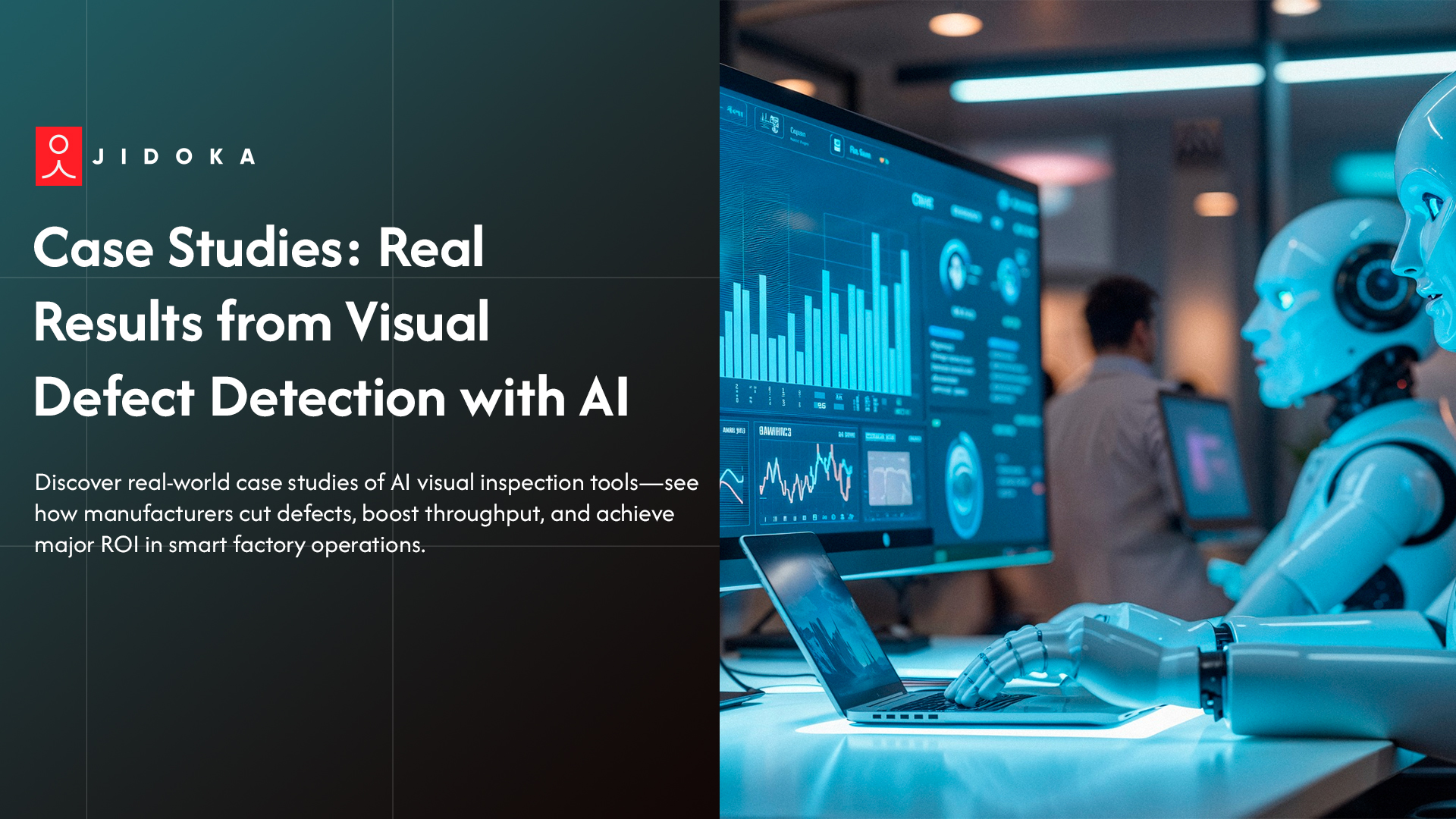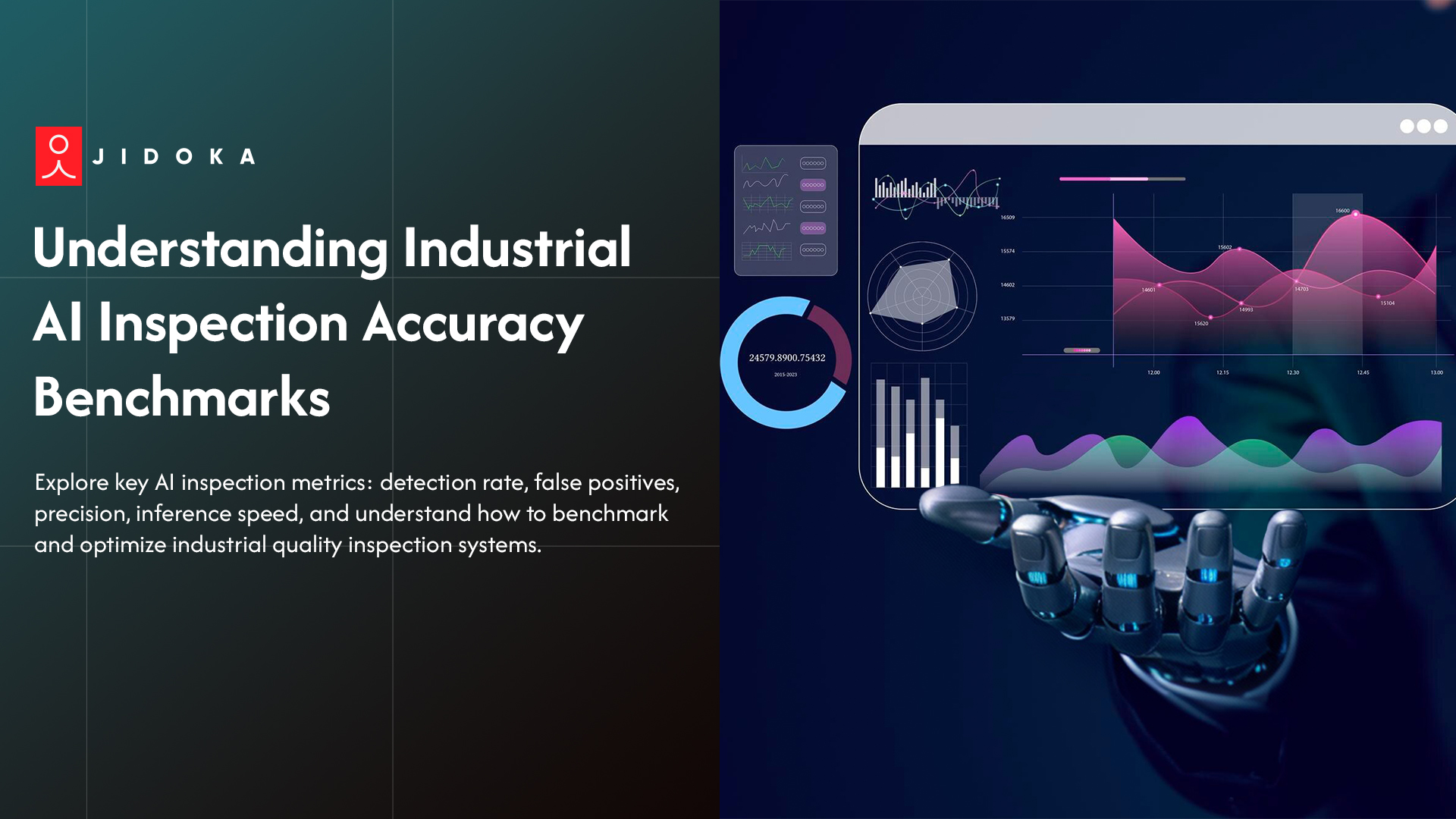Your U.S. manufacturing line needs 100% quality control automation in 2025. It's the new standard. The pressure is on to ditch manual inspection. But here’s the problem: "best" is a trap.
The best industrial camera system for a beverage line is useless for inspecting semiconductors. Buying the wrong one is a multi-thousand-dollar mistake. This guide isn't a brand list. It’s a problem-solving framework, showing you how Jidoka Tech approaches it.
This helps you choose the right industrial camera system for your specific job, from the sensor to the lighting for inspection.
The 3 Core Components of an Industrial Camera System
Stop thinking about just the camera. A successful industrial camera system is a team of three parts. If one part fails, the entire industrial camera system fails. A $10,000 camera is worthless if you choose the wrong lighting.
1. The Camera (The Sensor)
This is the "retina." It's the sensor (typically CMOS) that captures the image. These machine vision cameras define what they can see, such as for high-speed or high-resolution inspection.
2. The Machine Vision Lens (The Eye)
This is the precision optic that focuses the image. A bad machine vision lens will deliver a blurry, distorted image to a high-end camera, making its expensive sensor useless.
3. The Lighting for Inspection (The Sun)
This is the "sun" and the most common failure point. Proper lighting for inspection (like a dome, back, or coaxial light) is the most important part. It creates contrast to make defects "pop" for the camera.
You must get all three parts of your industrial camera system right. Now, let's look at how these components combine to solve five specific production problems.
The 5 Best Industrial Camera Systems for Your 2025 QC Problem
Instead of by brand, let's categorize the best industrial camera system by the problem it solves.
1. The Speed Demon: Best for High-Speed & Continuous Inspection
Problem It Solves: Your line is too fast for a standard camera. This is common in bottling, printing, or paper web manufacturing.
The System: A Line Scan system, like the Basler racer series. Forget a normal area scan camera that takes one photo at a time. These line scan cameras capture a single row of pixels, but at an incredible frequency, like 80,000 lines per second.
This type of industrial camera system builds a "perfect" 2D image line-by-line as the product moves underneath it.
Use Case: This is the heart of quality control automation for 100% inspection of continuous materials, like steel, paper, or fabric. This industrial camera system is also used for high-speed cylindrical inspection.
2. The Eagle Eye: Best for High-Resolution & Tiny Defects
Problem It Solves: Your defects are microscopic. You need to find tiny flaws on PCB traces, semiconductor wafers, or pixel defects on a display.
The System: A High-Resolution Area Scan system. We are talking about machine vision cameras with 25MP, 50MP, or even 127MP sensors, like those from specialists like Teledyne DALSA. This industrial camera system uses a snapshot method but packs in millions of pixels for extreme zoom. This is a true high-resolution inspection.
But this powerful industrial camera system is only effective if paired with a precision machine vision lens and the correct lighting for inspection to resolve those tiny flaws.
Use Case: This industrial camera system is common in electronics (PCB/semiconductor inspection), EV battery manufacturing, and medical device inspection.
3. The Dimension Checker: Best for 3D & Volumetric Inspection
Problem It Solves: Your defect isn't flat. It has height, depth, or volume. Think of a skewed cap, a bent pin, or not enough glue. A 2D industrial camera system is blind to this.
The System: You need a 3D vision system. This is often a 3D Laser Profiler or a Structured Light system. Companies like LMI Technologies are specialists here with their Gocator line. They project a laser, so the lighting for inspection is the laser itself. The system's camera and machine vision lens then calculate the part's precise 3D shape.
This industrial camera system builds a "point cloud" of data, something a flat 2D camera cannot do. This is a big step in industrial automation.
Use Case: Automotive (checking gap/flushness). Logistics (measuring box dimensions). Electronics (checking pin height or solder volume). This industrial camera system is key for 3D quality control automation.
4. The "All-in-One": Best for Fast, Simple Integration
Problem It Solves: You need a simple, reliable solution now. You don't want a complex PC and software for basic jobs like barcode reading or presence/absence checks.
The System: A Smart Camera. Brands like Cognex lead this space with their In-Sight series. This is a self-contained industrial camera system. It has the camera, processor, and software all in one rugged housing. These smart cameras often include an integrated machine vision lens or lighting for inspection.
It's less flexible than a PC-based industrial camera system, but integrators like Jidoka Tech deploy them for fast, reliable quality control automation.
Use Case: High-speed barcode reading, label orientation checks, or just confirming a cap is present on a line.
5. The Superhero: Best for Non-Visible & "Impossible" Defects
Problem It Solves: Your defect is invisible to the human eye. It could be under a plastic seal, a different chemical composition, or a subsurface crack.
The System: A Specialty Imaging industrial camera system. This is where AI inspection often meets advanced sensors.
This includes:
- SWIR (Short-Wave Infrared): These SWIR cameras, like those from Teledyne FLIR, see through opaque plastic to check fill levels. They require a special machine vision lens.
- Thermal: This industrial camera system sees heat, not light. It's perfect for thermal inspection, like checking the integrity of heat-seals on food packaging.
Hyperspectral: This system sorts materials by their chemical signature, not their color.
How Jidoka Tech Helps You Build Your Perfect Industrial Camera System
Buying the right components is only half the battle. At Jidoka Tech, we are system integrators who solve your entire problem. With 100+ successful implementations for 48+ trusted customers worldwide, we start with your U.S. production line and your defect.
We don't just sell you a camera. We build a complete, turnkey industrial camera system that guarantees 100% quality control automation.
Here is how we build your industrial camera system:
- Complete Problem Analysis: We first understand your specific defect.
- Component Matching: We select the right sensor and pair it with the optimal machine vision lens.
- Custom Lighting Engineering: We engineer the perfect lighting for inspection to make your defect "pop."
- Turnkey Integration: We build, install, and program the complete industrial camera system for your specific application.
Ready to build the right industrial camera system for your line? Contact Jidoka Tech today.
Conclusion
An industrial camera system in 2025 is not a product you buy from a catalog. It's a solution you must engineer. The biggest pain point is that success depends on perfectly integrating all three parts: the camera, the machine vision lens, and the lighting for inspection.
Choosing the wrong one is a multi-thousand-dollar mistake. You risk buying a powerful industrial camera system that still misses your defect, or worse, creates constant false rejects that stop your line. Don't let a bad system compromise your quality control automation.
This is why you don't just buy a camera; you invest in a complete solution. Jidoka Tech ensures your entire industrial camera system is engineered correctly from day one, solving your specific problem.
Let's connect with Jidoka Tech today and get a turnkey industrial camera system that truly solves your quality problems.
FAQs
1. What's the difference between a smart camera and a PC-based industrial camera system?
Smart cameras are an all-in-one industrial camera system for simple tasks. A PC-based industrial camera system is better for complex jobs. It uses a separate computer, giving it more power for demanding AI inspection and flexible quality control automation on your line.
2. What is a "line scan" camera used for?
Line scan cameras are built for speed in industrial automation. This industrial camera system inspects 100% of continuous, moving materials like paper or steel. It's the key to high-speed quality control automation, capturing a single, perfect image of a product as it moves.
3. When do I need a 3D industrial camera system instead of 2D?
You need 3D vision systems when your defect has shape, like a dent, bend, or volume. A 2D industrial camera system is blind to height. This 3D industrial camera system uses lasers or light patterns to measure shape, which is essential for true quality control automation.
4. How important is the machine vision lens?
The machine vision lens is the "eye." A bad machine vision lens will make your expensive camera worthless. It's essential for a successful industrial camera system. You cannot achieve sharp high-resolution inspection if your lens delivers a blurry image to the sensor.
5. What is a SWIR camera?
A SWIR camera is a special industrial camera system that sees what you can't, like water inside food or through opaque plastic. It's different from thermal inspection, which sees heat. A SWIR camera uses non-visible light for advanced quality control automation.
%205%20Best%20Industrial%20Camera%20Systems%20Out%20There.jpg)







